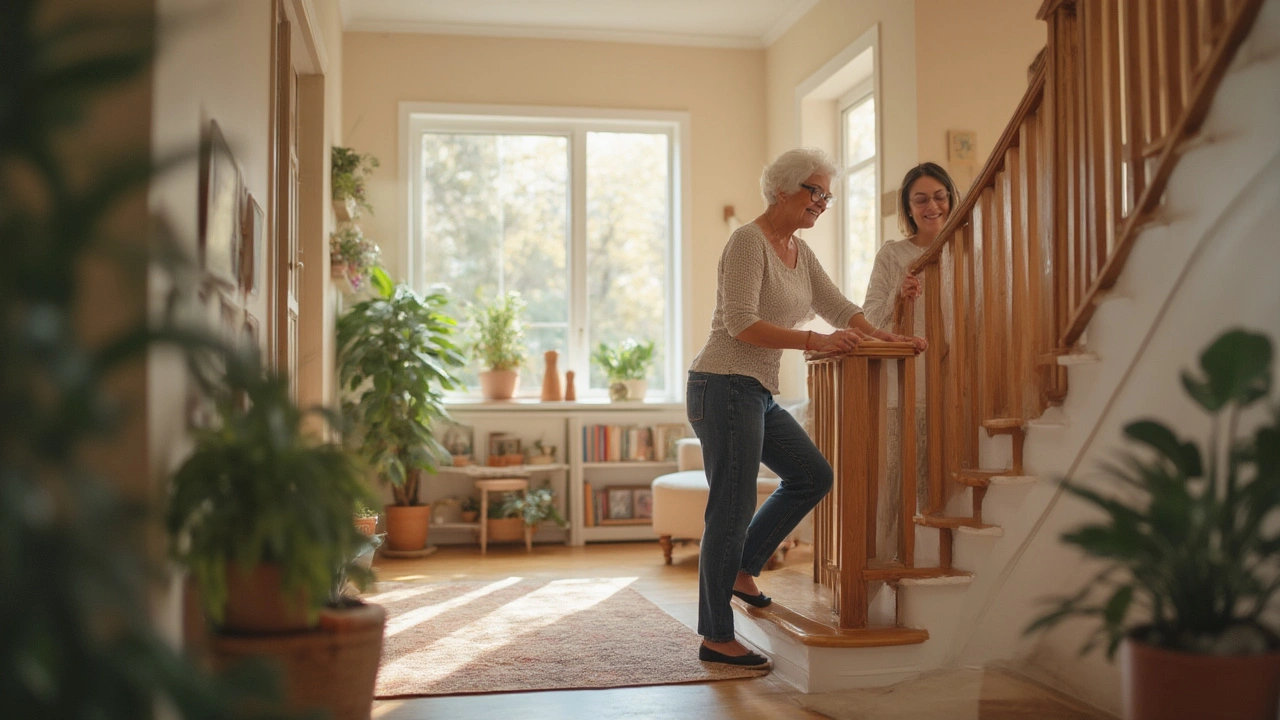Elderly Injury Management: Simple Steps to Keep Seniors Safe
Taking care of older adults means watching out for cuts, bruises, and especially falls. A broken bone or a nasty scrape can turn a routine day into a hospital visit. The good news? Small changes at home and a bit of know‑how can cut the risk dramatically. Below are the most useful tips you can start using right now.
Prevent Falls Before They Happen
Falls are the #1 cause of injury in people over 65. Start by decluttering pathways—remove loose rugs, cords, and anything that could trip a foot. Install grab bars in the bathroom and handrails on stairs. Good lighting is a must; night‑lights in hallways and motion‑sensor lights in bathrooms help when vision isn’t as sharp.
Shoes matter, too. Encourage snug, non‑slip shoes rather than slippers or socks. If the senior uses a walker or cane, make sure it’s the right height and that the tip is rubber‑capped for better grip. Regularly check the floor for spills and wipe them up quickly.
Quick Response to Common Injuries
Even with precautions, accidents happen. For cuts and scrapes, clean the wound with mild soap and water, then cover it with a sterile dressing. If the bleeding won’t stop after a few minutes of pressure, seek medical help—especially for deeper cuts.
Bruises are usually harmless, but a sudden, large bruise after a minor bump could signal a hidden fracture. Look for swelling, pain that gets worse with movement, or an inability to bear weight. If any of these show up, call a doctor right away.
For suspected fractures, keep the injured limb still and apply a cold pack to reduce swelling. Avoid moving the person more than necessary until a professional assesses the injury. Pain relievers like paracetamol can help, but avoid NSAIDs if the senior has kidney issues or is on blood thinners.
When a senior falls, check the head, neck, and back for signs of injury. If they’re drowsy, confused, or have a headache, treat it as a possible concussion and get medical attention swiftly.
Boost Recovery with Simple Care
Recovery is faster when nutrition and movement are on point. Protein‑rich foods—beans, lean meat, dairy—help rebuild muscle. Vitamin D and calcium support bone healing; consider fortified milk or a short‑term supplement if diet falls short.
Gentle exercises, like seated leg lifts or gentle walking, keep blood flowing and prevent stiffness. Physical therapists can design a plan tailored to the senior’s abilities, focusing on balance and strength to prevent future falls.
Stay on top of medication side effects. Some drugs cause dizziness or lower blood pressure, increasing fall risk. Talk to a pharmacist or doctor about adjusting doses or switching to safer alternatives.
Finally, keep a record of any injuries, what caused them, and the steps taken. This log helps caregivers spot patterns and improve safety measures over time.
Managing injuries in the elderly isn’t about high‑tech gadgets; it’s about common sense, quick action, and a supportive environment. Apply these straightforward practices, and you’ll see fewer mishaps and quicker recoveries for the seniors you care about.
Sprain Prevention and Care for Elderly: Tips for Safe Aging
- Natala Menezes
- |
- |
- 5
Sprains can cause trouble for seniors but many injuries are avoidable with smart habits, better home safety, and early care. Learn tips to help older adults stay active and safe.
View more